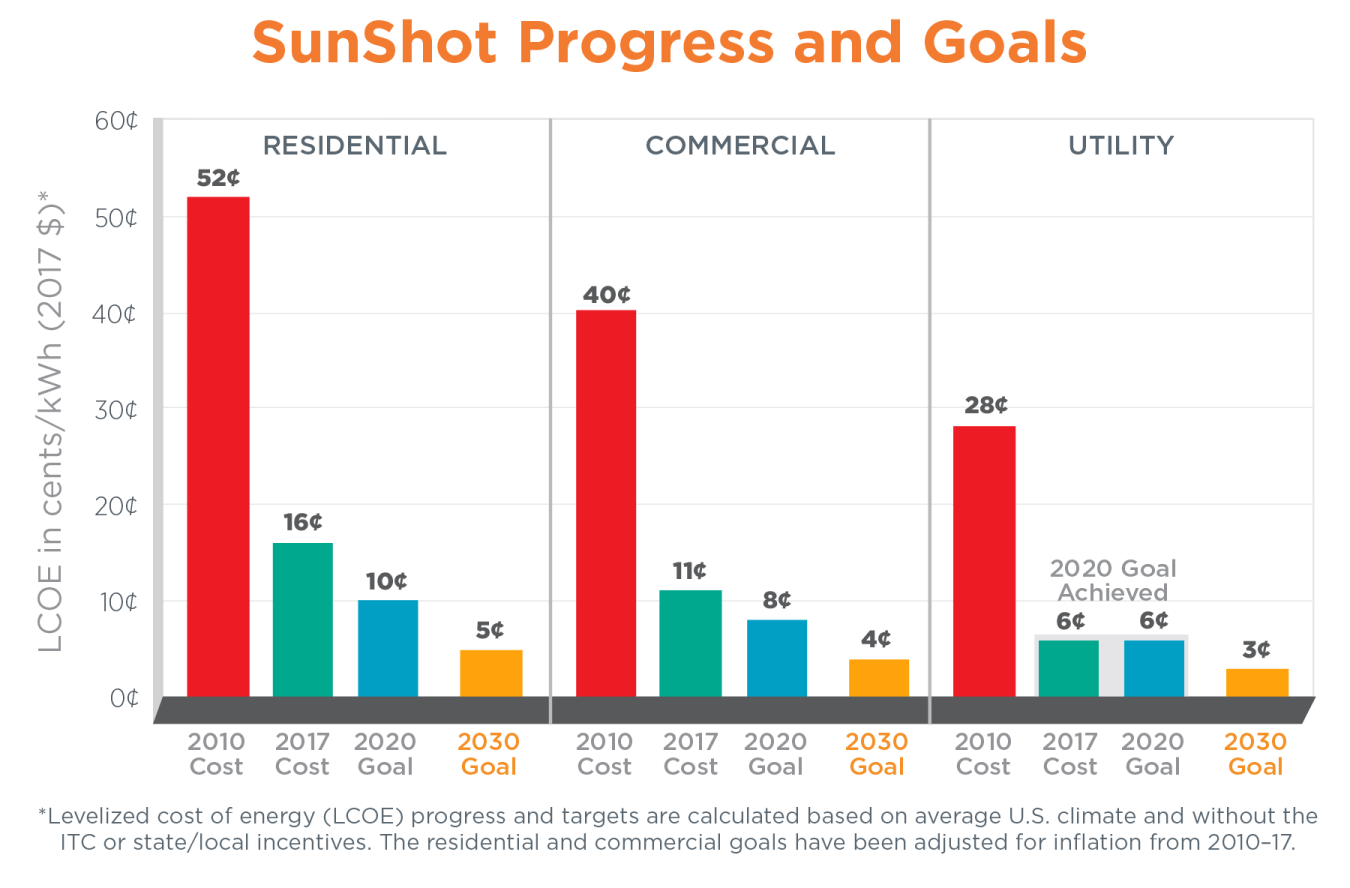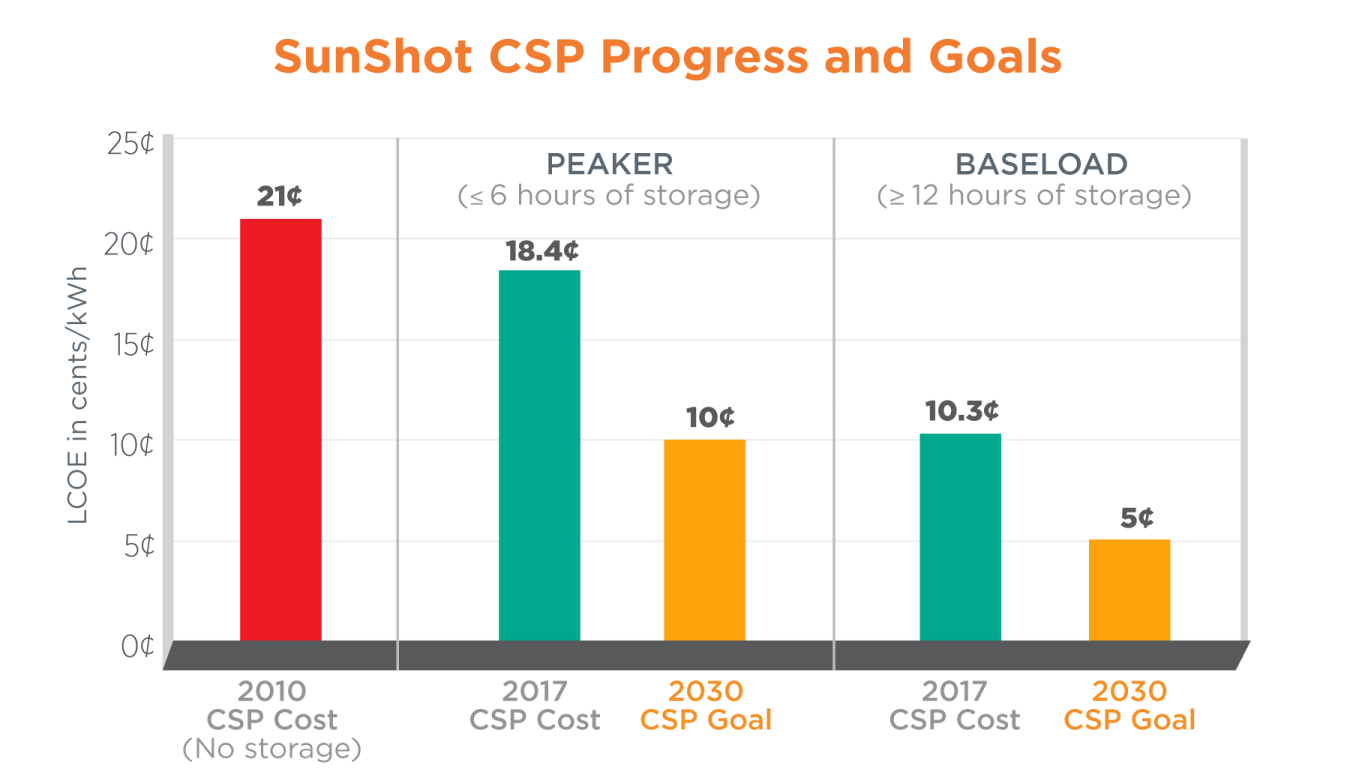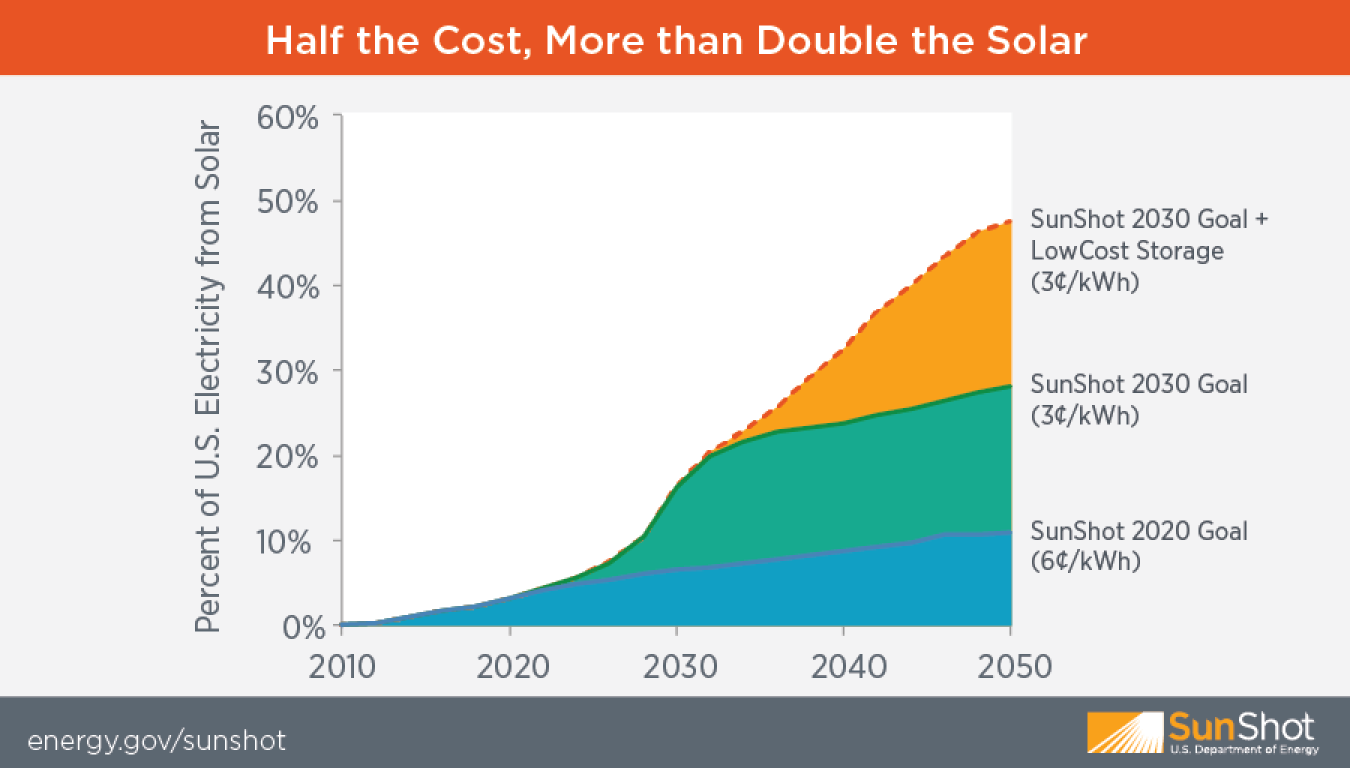
New Solar Opportunities for a New Decade
Since the Solar Energy Technologies Office (SETO) launched the SunShot Initiative in 2011, solar has made great strides in the United States. In early 2011, solar power comprised less than 0.1% of the U.S. electricity supply with an installed capacity of just 3 gigawatts. As of 2017, solar now supplies more than 1% of U.S. electricity demand with an installed capacity of more than 47 gigawatts.
The solar office has continuously worked toward its goal of enabling solar electricity costs to be competitive with conventionally generated electricity by 2020, without subsidies. During this time, the solar industry has seen tremendous progress in cost reduction. In 2017, the solar industry achieved SunShot’s original 2020 cost target of $0.06 per kilowatt-hour for utility-scale photovoltaic (PV) solar power three years ahead of schedule, dropping from about $0.28 to $0.06 per kilowatt-hour (kWh). Cost targets for residential- and commercial-scale solar have dropped from $0.52 to $0.16 and from $0.40 to $0.11 per kWh respectively.
Building off of and updating the original SunShot vision, the Solar Energy Technologies Office set goals for 2030. The goals cut the levelized cost of energy (LCOE) of photovoltaic solar by an additional 50% to $0.03 per kWh for utility-scale and cut the LCOE of concentrating solar power to $0.05 per kWh for baseload power plants, while also addressing grid integration challenges and addressing key market barriers in order to enable greater solar adoption. Achieving these goals would make solar one of the least expensive sources of new electricity generation and spur growth across the country.
The 2030 goals were announced on November 14, 2016. Read the press release and download the report that highlights the 2030 goals.
2030 Goals Detailed
At $0.03 per kilowatt-hour, electricity from utility-scale photovoltaic solar would be among the least expensive options for new power generation and it would be below the cost of most fossil fuel-powered generators, contributing to greater energy affordability. Learn more about how LCOE is calculated.

CSP with thermal energy storage directly addresses grid integration challenges, allowing solar-generated heat to be stored until electricity is needed, even well after the sun sets. Reflecting this increased value of dispatchable solar, there are two 2030 targets for CSP:
- $0.05 per kWh for baseload configurations (with a minimum of 12 hours of storage)
- $0.10 per kWh for peaker configurations (with less than six hours of storage) designed to deliver electricity only when it is most highly valued by grid operators
These targets are highly competitive with other dispatchable power generators and would enable greater overall penetration of solar electricity on the grid, while also enabling more reliable solar energy generation and increasing its value.

In addition to the 50% reduction in LCOE, the solar office will work to advance grid integration solutions, including integration of solar with energy storage, enhanced grid flexibility, communications, and controls. Combining very low-cost storage (capital costs at $100/kWh for an 8-hour battery by 2040) with low-cost PV could enable solar energy to supply a large share of U.S. electricity by 2050. Recent NREL Regional Energy Deployment System projections using today’s baseline assumptions for all technologies other than solar and storage illustrate the potential impact of lower cost solar and storage.

The goals also address market barriers that limit solar adoption, including streamlining processes to reduce project time cycles, expanding access to solar, and accurately representing solar’s value in a more integrated energy system.
Information Resources
- SunShot 2030 Goals Report and Graphics
- CSP 2030 Report released January 17, 2019: The Potential Role of Concentrating Solar Power within the Context of DOE’s 2030 Solar Cost Targets
- SunShot 2030 press release from November 14, 2016: Energy Department Announces More than 90% Achievement of 2020 SunShot Goal, Sets Sights on 2030 Affordability Targets
- On the Path to SunShot study series
- On the Path to SunShot press release from May 18, 2016: New Study Examines Progress toward SunShot Initiative Goals, Identifies Emerging Solar Energy R&D Opportunities for 2020 and Beyond
- SunShot Vision Study
- The SunShot Story: Challenging the Solar Industry to Say ‘What If’ Since 2011
- Community and Shared Solar
- SunShot Initiative launch press release from February 4, 2011: DOE Pursues SunShot Initiative to Achieve Cost Competitive Solar Energy by 2020
